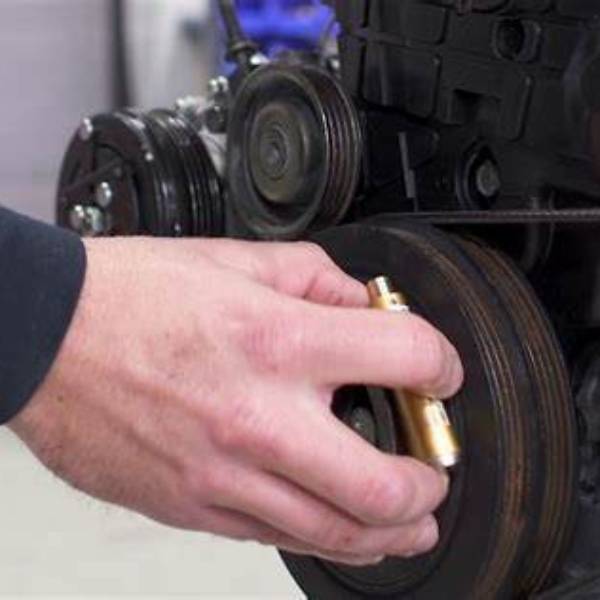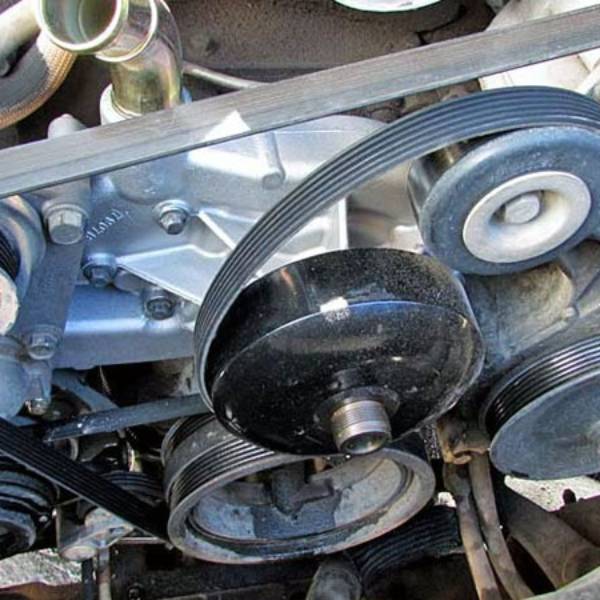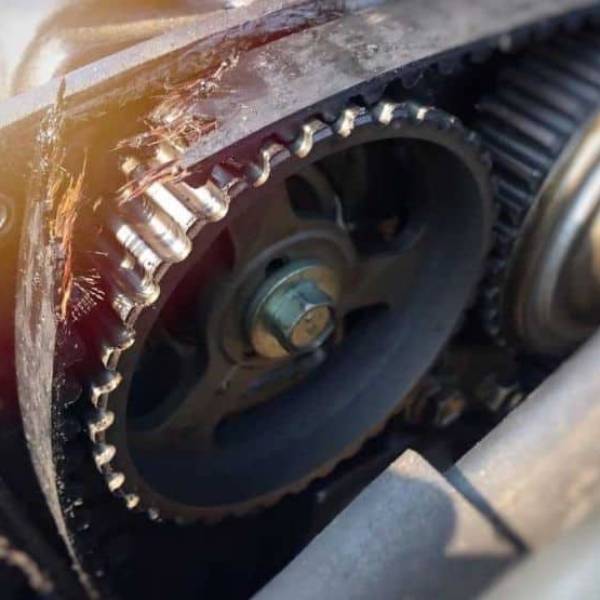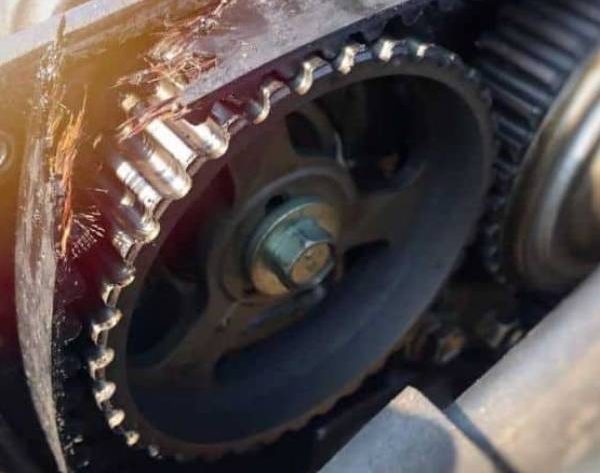A bad serpentine belt sound can quickly become a source of concern for vehicle owners. The serpentine belt, a crucial component in your car, drives multiple accessories. These include the alternator, power steering pump, air conditioning compressor, and more. Understanding the indications of a failing serpentine belt can save you from costly repairs and potential breakdowns. This article explores the common bad serpentine belt sounds and their implications for your vehicle.

Recognizing Bad Serpentine Belt Sound
When your vehicle makes a squealing noise, it often points to a serpentine belt issue. You might hear this sound when you start the engine or accelerate. If the sound becomes persistent, you should investigate further. A loose serpentine belt usually causes slippage, leading to a high-pitched squeal. Additionally, if the belt is worn, it may develop cracks and compromise its effectiveness. These signs often indicate the need for immediate attention. Ignoring the problem can lead to more significant engine issues and greater repair costs.
Taking Action
After identifying a potential serpentine belt problem, it’s crucial to take action promptly. Check the belt for any visible signs of wear or damage. If you notice cracks or fraying, replace the belt as soon as possible. Additionally, ensure that the belt’s tension is adequate. A properly tightened belt will run smoothly and efficiently. If you lack the tools or expertise, consider consulting a mechanic.
They can provide a thorough inspection and recommend necessary repairs. By addressing the issue early, you prevent further complications that could impact your vehicle’s performance. Regular maintenance can also extend the life of your serpentine belt. Therefore, regularly check the condition of your belt, especially if you often hear unusual sounds.
Causes of Bad Serpentine Belt Sound
Several factors contribute to a bad serpentine belt sound. One significant reason involves the natural wear and tear of the belt. As the engine operates, friction and heat build up, causing the belt material to deteriorate. This degradation results in poor performance and can produce squeaking or chirping noises. Proper maintenance helps to mitigate this issue, but belts will eventually need replacement. Additionally, exposure to harmful chemicals or contaminants can accelerate the wear process. Drivers should regularly check the condition of the serpentine belt to ensure it remains in good shape.
Misalignment of Pulleys
Another factor that can create unwanted noise involves misaligned pulleys. When pulleys do not align correctly, they exert excess pressure on the serpentine belt. This misalignment forces the belt to work harder, leading to increased friction and noise generation. Misalignment can occur due to worn bearings or improper installation. Therefore, vehicle owners should inspect the pulleys and belt configuration periodically.
If they notice any discrepancies, they should address them immediately to avoid further damage. Ensuring that both the belt and pulleys function harmoniously can significantly reduce noise levels. Regular checks and timely repairs promote a smoother and quieter engine operation, enhancing the driving experience.

Consequences of Ignoring Bad Serpentine Belt Sound
Ignoring a bad serpentine belt sound can lead to significant issues. First, a faulty belt can cause several accessories to fail simultaneously. For example, when the alternator stops working, your battery may not charge correctly. You will notice dimming headlights and electrical issues. Furthermore, the loss of power steering can make turning difficult, especially at low speeds. Your driving experience becomes stressful and dangerous. Additionally, a broken belt can place excessive strain on the engine. This strain can lead to complete engine failure, which can be catastrophic for your vehicle.
Preventative Measures for Serpentine Belt Issues
Taking preventative measures can help avoid these complications. Regularly inspect your serpentine belt for cracks, frays, or signs of wear. If you notice any problems, replace the belt immediately. Staying proactive can save you from costly repairs later. You should also listen for unusual noises while driving, as they may indicate a problem. Pay attention to changes in how your vehicle responds when you steer.
If you notice anything unusual, consult a mechanic promptly. A timely inspection can prevent minor issues from becoming major problems. Furthermore, understanding your vehicle’s maintenance schedule can help you stay ahead. Regular maintenance checks can identify potential issues before they escalate. Protecting your vehicle ensures a safer and more enjoyable driving experience. By remaining vigilant about your serpentine belt, you maintain your vehicle’s reliability. Thus, you keep yourself safe on the road and avoid unnecessary repairs.
Inspecting Your Vehicle for Bad Serpentine Belt Sound
A regular inspection of your serpentine belt plays a crucial role in vehicle maintenance. Checking the belt for visible cracks and fraying ensures its effectiveness. You should also look for signs of wear, as they can indicate a serious problem. If the belt appears shiny, it might suggest excessive friction and wearing down.
A shiny belt often requires immediate attention, so don’t ignore this warning. Furthermore, understanding how your belt operates benefits your overall vehicle performance. Keeping a close watch on these components prevents costly repairs down the line. A well-maintained belt buckle on your belt ensures optimal function, contributing to your vehicle’s performance and helping you avoid costly repairs in the future.
Checking Pulleys and Tensioners
In addition to inspecting the belt, you should examine the pulleys and tensioners. Proper alignment and functionality of these parts are essential for your serpentine belt’s efficiency. Misaligned components can lead to more wear and tear on the belt. It’s easy to overlook these parts, but they play a significant role in your vehicle’s performance. A basic visual inspection of pulleys ensures everything remains in its proper place.

Early identification of potential problems can save you time and money. Always prioritize maintenance tasks like this to ensure your car runs smoothly. With regular checks, you maintain not just your belt but your vehicle’s overall health. Regular maintenance practices are vital for long-term vehicle reliability; neglect can lead to bigger issues in the future. Thus, stay proactive about your inspections, and keep your vehicle in optimal condition. Just like regular car maintenance, timely luggage repair can prevent larger issues, ensuring your travel essentials remain in optimal condition for your journeys.
When to Seek Professional Help for Bad Serpentine Belt Sound
If you’re unsure about the source of the bad serpentine belt sound, seek professional help. A qualified mechanic can diagnose the issue accurately. They can identify whether the problem lies with the belt, pulleys, or another component. Early intervention can prevent further damage to your vehicle. It’s always better to err on the side of caution when dealing with engine components.
Maintenance Tips to Avoid Bad Serpentine Belt Sound
Preventing bad serpentine belt sounds starts with proper maintenance. Regularly inspect your serpentine belt for wear and tear. Keep an eye on the tension to ensure it remains within specifications. Replacing the belt according to your manufacturer’s recommendations can also prevent issues. Additionally, consider using belt dressing to prolong the belt’s life. This can help maintain grip and reduce noise. Regular maintenance of your serpentine belt, including timely tension checks and timely Timming Belt Change, is crucial for optimal vehicle performance and noise reduction.
Conclusion: Addressing Bad Serpentine Belt Sound Promptly
In summary, a bad serpentine belt sound should never be overlooked. Recognizing the signs early can help you avoid significant vehicle issues. Understanding the causes, conducting routine inspections, and seeking professional help are crucial. By taking preventative measures, you can maintain your vehicle’s performance. Don’t wait until a minor sound turns into a major problem. Addressing issues promptly ensures a safe and reliable driving experience.



